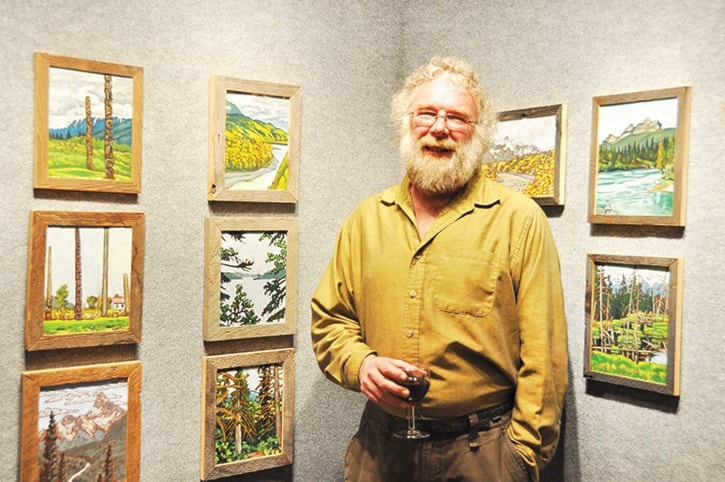The work of Plein air artists Glenn Clark and Peter Corbett is on display at the Station House Gallery with their show called Abandoning Paradise.
One of the reasons for the exhibit is both artists’ concern for the protection of B.C.’s wilderness, and the paintings reflect the east/west traverse of the proposed Enbridge pipeline. The purpose is to show support for an oil tanker ban on B.C.’s coast.
Corbett, who is also a fish biologist, is from the Slocan Valley and Clark is from Penticton; the two artists have traveled and painted together for years. It’s their first time showing in Williams Lake.
He explained that ‘plein air’ means painting outdoors, and added that to find another painter who ‘matches’ you in method, motif and interest is very rare.
“It sounds kind of strange, but painting at the same speed is a factor too,” he explained. “If someone takes two hours to finish a painting and someone else takes 45 minutes, it’s not going to work.
“When you’re driving down a logging road in the middle of nowhere and you both say at the same time, ‘That’ll do!’ and jump out of the truck, it’s like a SWAT team.
“Especially when you finish your last brush stroke and you look over and he’s finished, too.”
He said that, for him, the universal attraction for this style of painting started when he was a child, looking at work by the Group of Seven, who painted in oils, outside. “Our work can be compared to that – impressionistic, gestural brush strokes, not worried about too much detail. We’re worried more about a feeling and an emotion that comes from standing in that place,” he explained. “Design and composition is really critical to this kind of work.”
There are challenges to painting on-site, says Corbett, who cited bears, bugs, weather, logging trucks, hostile plant life and a mini-tornado that swooped forest debris 125 feet up in the air and flung it down 25 feet away, as some of things they have experienced while set up with their easels in the wilderness.
Corbett said that his experience as a biologist has had a huge impact on his art, including knowledge of ecosystems and knowledge.
He also explained that the reason the paintings in the display are all the same size is that eight by 10 inches classic size for plein air work.
“It’s big enough that I can collect a substantial amount of data on it, but not so big that it takes me too long to paint,” he said. “Because if it takes me two hours to paint it, the light, the clouds and the shadows will have changed. When it’s painted faster, it captures more of the very moment. If it’s too small, though, you don’t collect enough data.”
He added that the field sketches he collects can also be turned into larger works in the studio.
One of the things he said he loves about plein air painting is that you have less than an hour to capture it – a spontaneity and sense of urgency that is fresh and interesting.
“Nature is very much like that,” he said. “That’s what makes this so exciting.”
More information about upcoming events and shows is available at the Station House Gallery.
